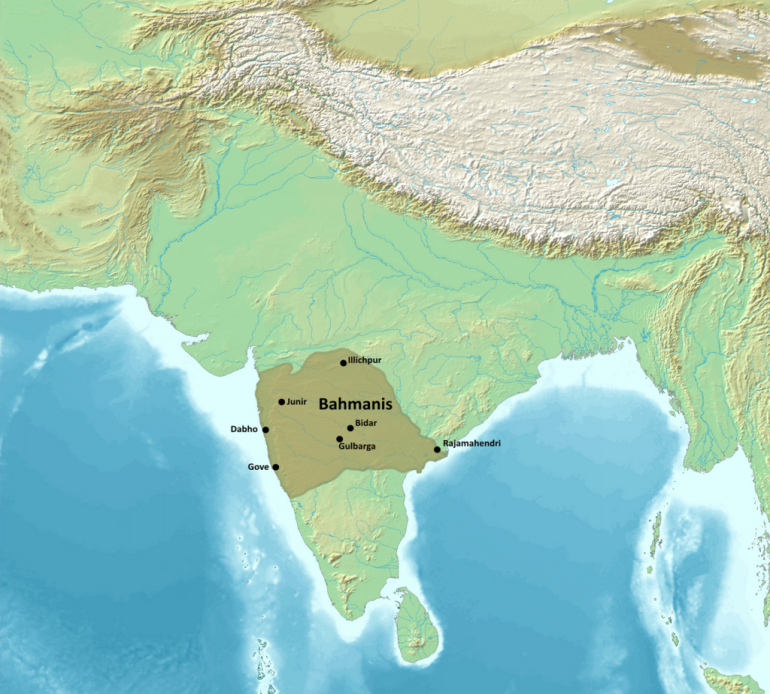Bidar Fort: Iconic Symbol of Bahmani Kingdom’s Architectural Legacy
Why in the news?
Bidar Fort, a historic site of the Bahmani dynasty, gains attention for its unique Persian-Islamic architecture and cultural heritage, showcasing Karnataka’s rich history and architectural grandeur.
Bidar Fort: Historical Significance
- Located in Karnataka, Bidar Fort stands as a remarkable relic from the Bahmani dynasty, established as their capital in 1430 by Sultan Ahmed Shah Wali.
- Constructed with trap rock, the fort features a blend of Persian and Islamic architectural styles, showcasing the Bahmani Kingdom’s cultural influences.
- As a testament to the region’s Islamic heritage, the fort includes seven entrances, 37 octagonal bastions, mosques, and over 30 Islamic monuments.
Legacy of the Bahmani Kingdom:
- The Bahmani Kingdom, established in 1347 by Alauddin Bahman Shah, holds the distinction of being South India’s first Islamic kingdom.
- Bidar Fort symbolises the kingdom’s power and prosperity, which thrived under strategic rulers and administrators.
- Mahmud Gawan, a visionary Prime Minister, was instrumental in the kingdom’s territorial expansion, further solidifying its influence in South India.
Decline and Architectural Grandeur:
- Despite its former glory, the Bahmani Kingdom began to weaken, eventually succumbing to the Vijayanagar Empire’s dominance in
- Bidar Fort’s impressive structures and layout continue to attract visitors, offering a glimpse into the Bahmani era’s architectural and cultural grandeur.
- Today, the fort is not only a significant historical landmark but also an enduring symbol of the Bahmani dynasty’s legacy in South India.
Sources Referred:
PIB, The Hindu, Indian Express, Hindustan Times
Watch on Youtube : https://www.youtube.com/shorts/GPx8WWJBY2I






